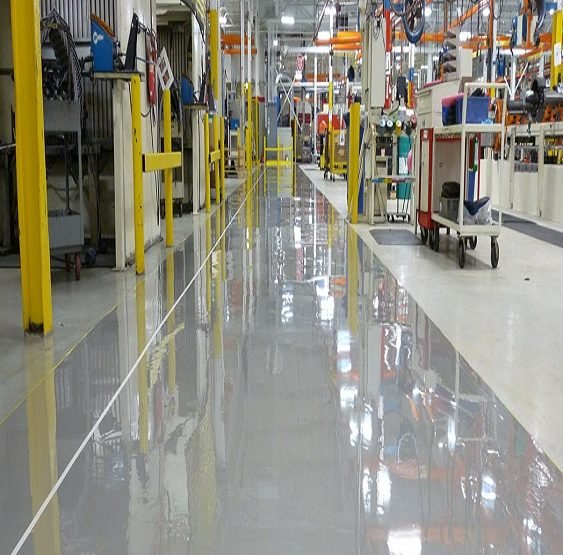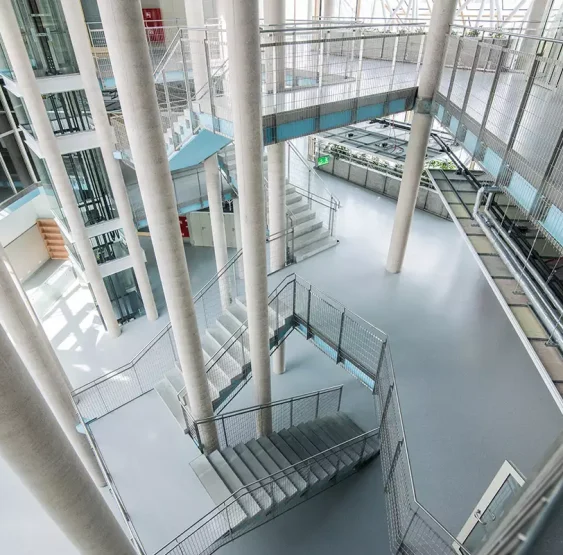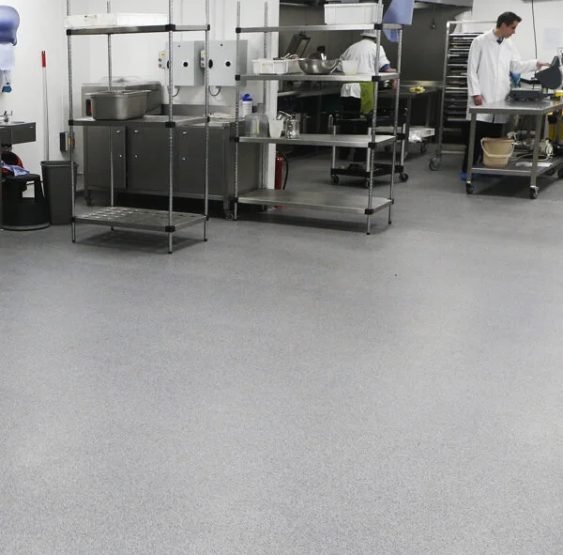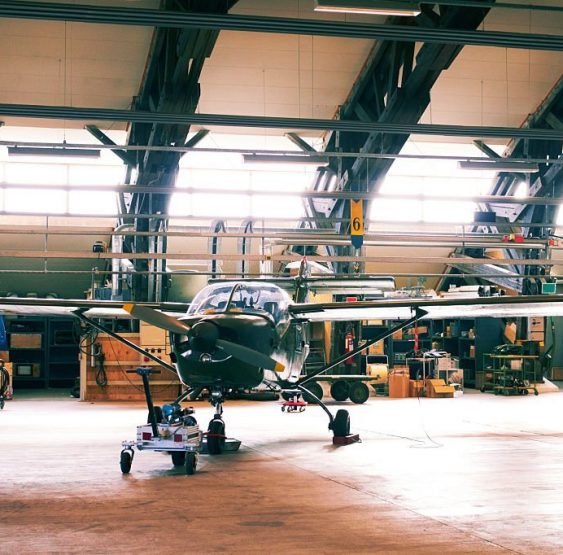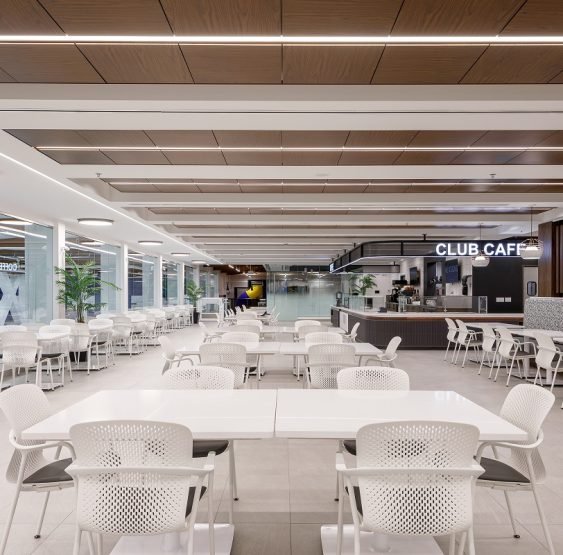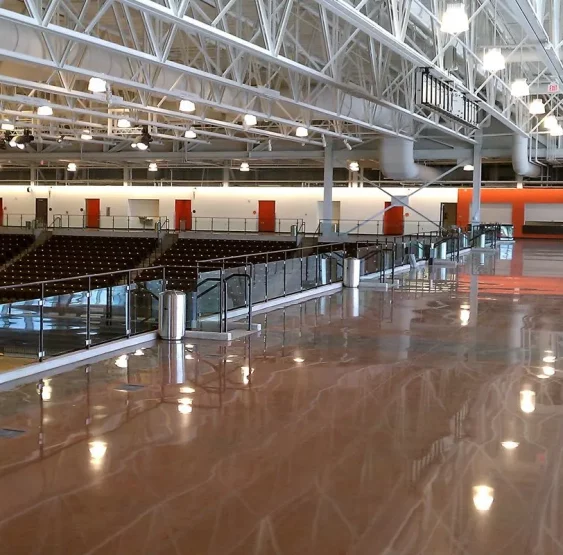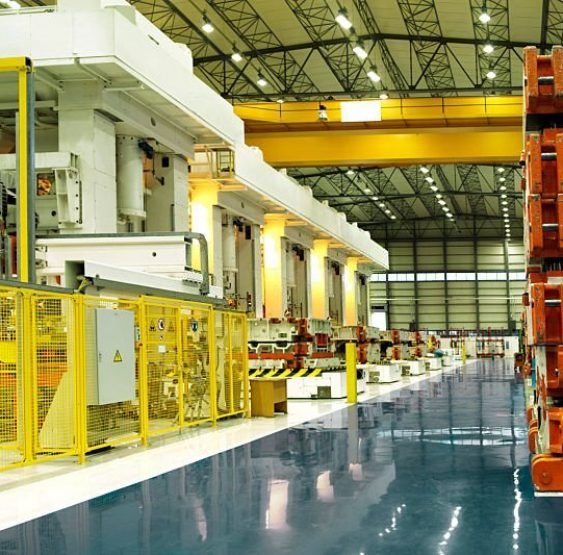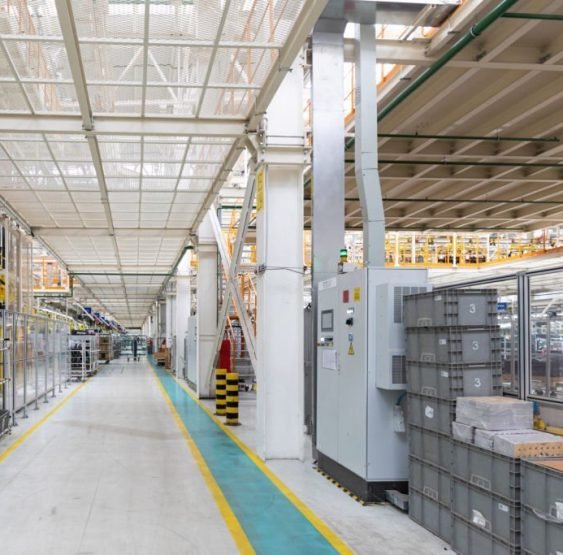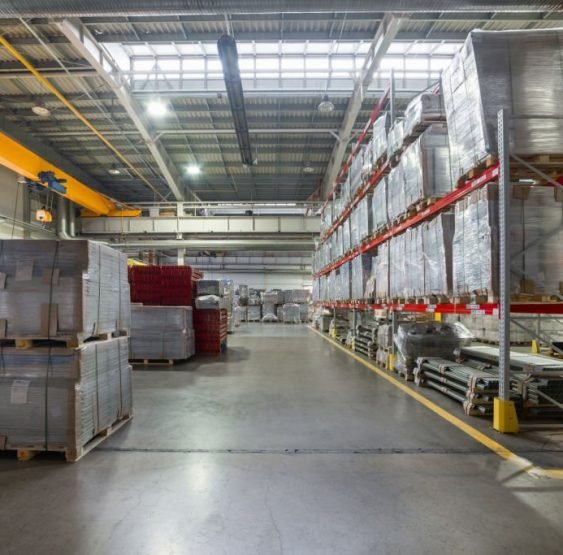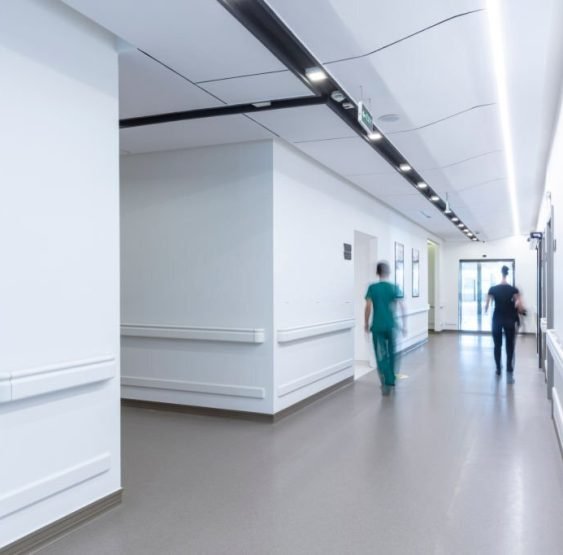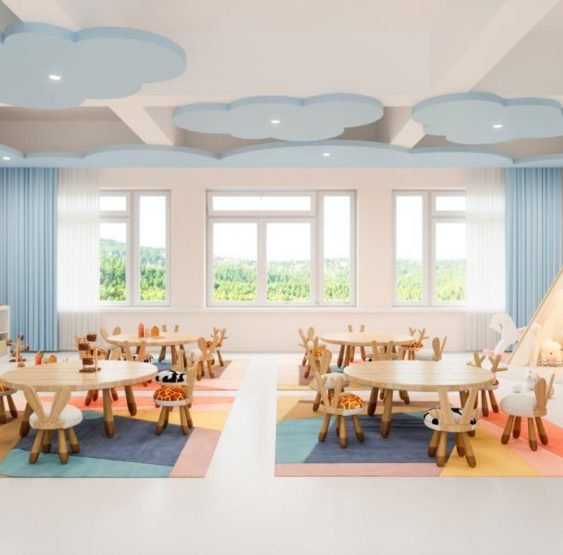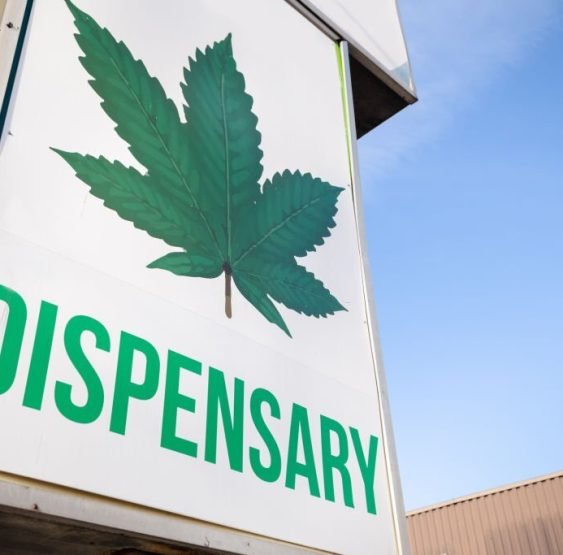Ambulance & EMS Epoxy Flooring
Seamless • Non-Slip • Disinfectant-Resistant
Priority One Epoxy Flooring installs high-performance flooring for ambulance bays, decontamination rooms, and hospital support corridors across Vancouver & BC. Our resin systems are engineered to handle vehicle loads and stretcher traffic, resist harsh disinfectants and fuels, and make infection-control cleaning faster with minimal downtime.
Ambulance & EMS Epoxy Flooring Vancouver, BC
Priority One Epoxy Flooring provides purpose-built ambulance and EMS epoxy flooring across Vancouver and the Lower Mainland. Our flooring systems are engineered specifically for the realities of emergency services — repeated vehicle movements, stretcher and gurney traffic, frequent use of strong disinfectants, and the need for fast, reliable infection-control cleaning. We design, prep, and install seamless, non-slip, chemical-resistant coatings that protect personnel, patients and infrastructure while minimizing operational downtime.
Below you’ll find a full overview of the systems we install, the problems they solve, our installation process, case studies from the region, maintenance recommendations, and answers to commonly asked questions — all presented in the same style and structure you requested so it’s ready to paste into your site.
Common Problems We Solve for EMS & Ambulance Facilities
- Slip and fall risk: Wet floors, disinfectant residue, and stretcher wheels create hazards. We deliver textured, broadcast systems with engineered traction to meet facility safety criteria.
- Chemical attack & staining: Repeated cleaning with hospital-grade disinfectants, accidental spills of fuels or oils, and biological fluids can degrade unprotected concrete. Our chemistries resist staining and surface breakdown.
- Surface deterioration: Cracks, spalls and delamination from heavy equipment or poor substrate preparation shorten concrete life. We repair and restore before coating to deliver a long-term solution.
- Downtime constraints: Emergency services can’t afford long closures. We offer fast-cure options and phased execution to keep essential bays operable.
- Hygiene & infection control: Joints and porous surfaces harbor contaminants. Seamless systems reduce bacterial harborage and speed cleaning.
Tackling root causes — not just surface fixes — is our standard. That means concrete repair, moisture testing, and specifying materials that match each area’s operational needs.
Coating Systems We Install
Epoxy Broadcast Systems
Two-part epoxy base coats broadcast with graded quartz or aggregate form a hard, impact-resistant bed. This approach is ideal for interior ambulance bays and garage areas where wheels, carts and stretchers cause high abrasion. Broadcasted quartz can be tuned for pedestrian vs vehicle traction, and sealed with a topcoat that provides chemical resistance and wear protection.
Polyurethane & Urethane Topcoats
Polyurethane topcoats are more flexible and UV-stable than many epoxies, making them an excellent finish where sunlight or temperature fluctuation is a factor (for example, partially exposed ambulance canopies). They improve abrasion resistance and often extend system life when paired with an epoxy primer.
Fast-Cure Polyaspartic Systems
For facilities that cannot tolerate long closures, polyaspartic coatings cure rapidly and allow reopening within 24–48 hours. These systems provide excellent UV resistance and chemical durability, and are commonly used for phased repairs or quick-turn upgrades.
Seamless Hygienic Membranes
For clinical support rooms, decontamination areas, and patient transfer zones we install fully seamless coved systems. These eliminate seams and joints where bacteria collect and deliver surfaces that meet strict infection control cleaning protocols.
Our Process — What to Expect
- Initial site assessment & testing: We inspect traffic patterns, hygiene protocols, test for substrate moisture, and map areas requiring structural repair.
- Recommendations & budgeting: We present options — fast-turn polyaspartic systems vs long-life epoxy/polyurethane systems — with clear pros/cons tied to downtime and lifecycle cost.
- Concrete repairs & joint work: Spalls are patched, cracks routed and sealed, existing failing membranes removed, and joints rebuilt with flexible systems where movement is expected.
- Surface preparation: Shot blasting or diamond grinding ensures a clean profile and physical bond for the coating system.
- Primer/base coats and broadcast: Epoxy primers stabilize the substrate; broadcast aggregates are used where traction is critical.
- Top coat & protection: We apply polyurethane or polyaspartic finishes suited to your disinfectant regimes and traffic profile.
- Final QA & handover: We record adhesion readings, film thickness, and provide maintenance guidance plus warranty documentation.
Why Choose Priority One Epoxy Flooring
- Depth of experience across Vancouver & BC on EMS and healthcare projects
- Material-agnostic recommendations — we specify systems based on need, not brand
- Full in-house concrete repair and joint work — one contractor, single responsibility
- Phased execution to reduce operational impact
- Comprehensive documentation and warranty support
Benefits Facilities Notice
- Improved safety via consistent traction across the facility
- Faster, more effective sanitation cycles with seamless surfaces
- Protection from staining and chemical degradation
- Lower lifecycle costs due to extended substrate life
- Rapid return-to-service options for critical bays
Case Study — Downtown Vancouver Ambulance Station
A high-call suburban ambulance station experienced progressive surface breakdown from fuel drips, stretcher wheels and heavy cleaning cycles. We performed a full assessment, staged concrete repairs, and installed a quartz broadcast epoxy base with a chemical-resistant polyurethane topcoat. Work was phased across three weekends so daytime shifts remained operational. Since completion the station reported shorter cleaning cycles, better traction during wet weather, and no surface-related service interruptions.
Case Study — Hospital Supply & Transfer Corridor
A tertiary care facility needed to replace worn flooring in equipment storage and transfer corridors. We specified a seamless coved epoxy system to meet infection control requirements and engineered the schedule around night-shift hours. The finished floor improved cleanliness, reduced equipment drag noise, and removed trip hazards from uneven concrete.
Service Areas — Vancouver & British Columbia
We mobilize crews throughout Metro Vancouver and BC: Vancouver, Burnaby, Richmond, Surrey, Coquitlam, North Shore, the Fraser Valley, Vancouver Island (Victoria, Nanaimo), and regional centres including Kelowna and Kamloops.
Frequently Asked Questions
How long does installation take?
Typical bay replacements can be completed in phased weekends or 2–5 working days for single bays. Fast-cure polyaspartic systems can reopen in 24–48 hours when surface prep is limited.
Are epoxy floors slip-resistant when wet?
Yes — when specified with the correct broadcast aggregate and sealed with the right topcoat, systems provide consistent traction even under wet conditions.
Will disinfectants damage the floor?
No — we choose topcoats rated for resistance to the disinfectants and cleaning agents used at your facility.
Can you repair localized damage later?
Yes — our systems are repairable. We maintain records of installed materials and mixes so future repairs match the original finish for strength and appearance.
Protect Your EMS Facility Today
Request a free inspection and written proposal from Priority One Epoxy Flooring. Our team will assess your floors, recommend the system that balances downtime, cost and lifespan, and provide a clear schedule for phased implementation.

